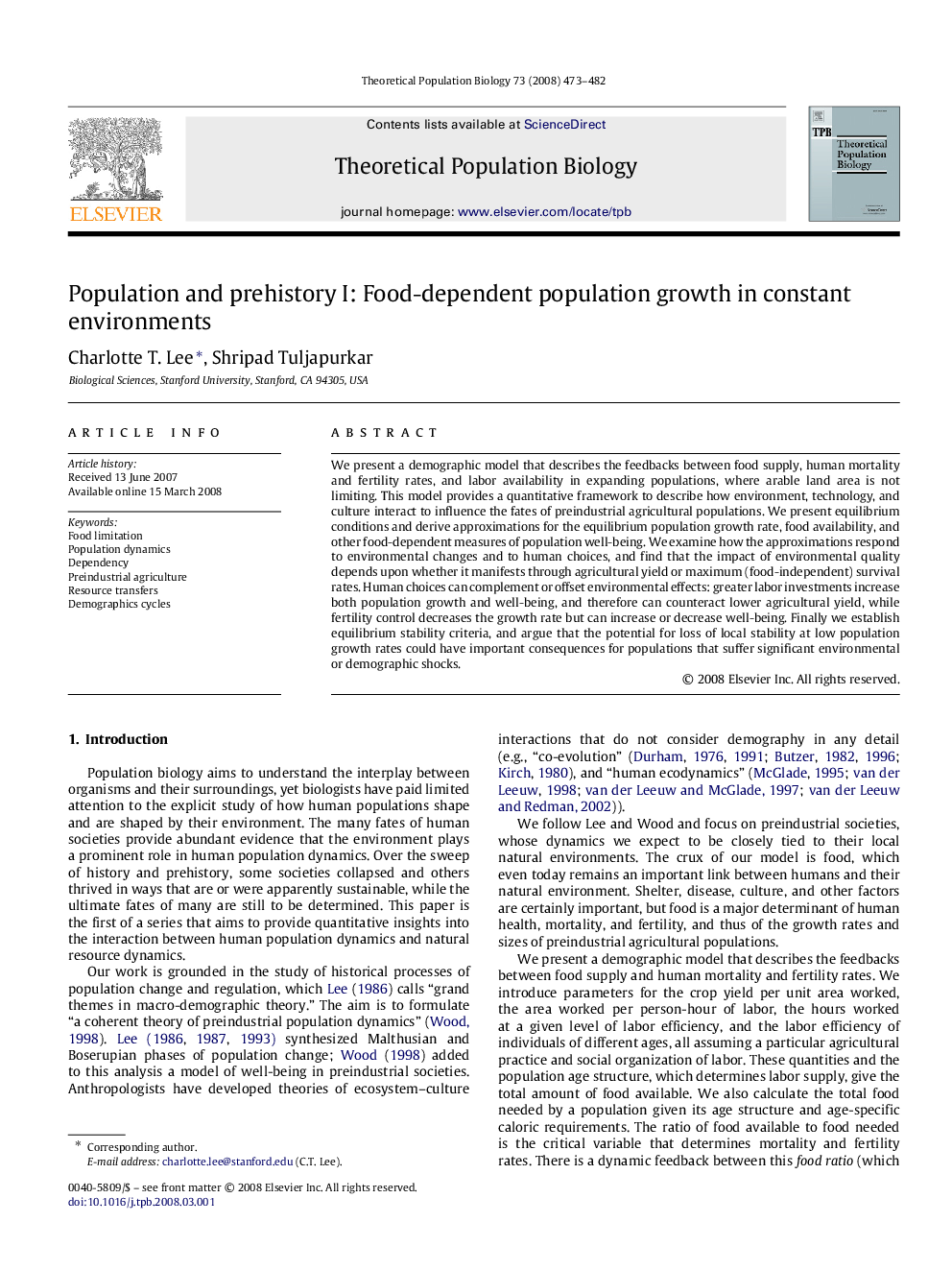| Article ID | Journal | Published Year | Pages | File Type |
|---|---|---|---|---|
| 4502717 | Theoretical Population Biology | 2008 | 10 Pages |
Abstract
We present a demographic model that describes the feedbacks between food supply, human mortality and fertility rates, and labor availability in expanding populations, where arable land area is not limiting. This model provides a quantitative framework to describe how environment, technology, and culture interact to influence the fates of preindustrial agricultural populations. We present equilibrium conditions and derive approximations for the equilibrium population growth rate, food availability, and other food-dependent measures of population well-being. We examine how the approximations respond to environmental changes and to human choices, and find that the impact of environmental quality depends upon whether it manifests through agricultural yield or maximum (food-independent) survival rates. Human choices can complement or offset environmental effects: greater labor investments increase both population growth and well-being, and therefore can counteract lower agricultural yield, while fertility control decreases the growth rate but can increase or decrease well-being. Finally we establish equilibrium stability criteria, and argue that the potential for loss of local stability at low population growth rates could have important consequences for populations that suffer significant environmental or demographic shocks.
Related Topics
Life Sciences
Agricultural and Biological Sciences
Agricultural and Biological Sciences (General)
Authors
Charlotte T. Lee, Shripad Tuljapurkar,
